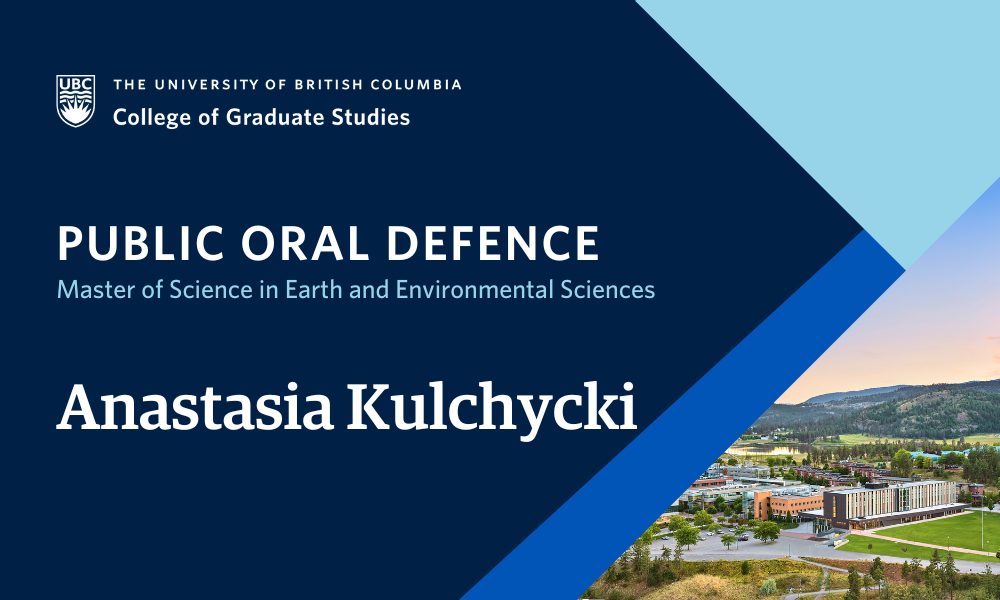
- This event has passed.
Thesis Defence: A structural and geochronological investigation of the Keno Hill area, central Yukon, Canada
August 29, 2024 at 9:00 am - 1:00 pm

Anastasia Kulchycki, supervised by Dr. Kyle Larson, will defend their thesis titled “A structural and geochronological investigation of the Keno Hill area, central Yukon, Canada” in partial fulfillment of the requirements for the degree of Master of Science in Earth and Environmental Sciences.
An abstract for Anastasia Kulchycki’s thesis is included below.
Defences are open to all members of the campus community as well as the general public. Registration is not required for in person defences.
ABSTRACT
The western margin of North America was shaped by the Cordilleran orogen. In the mid-Cretaceous, northeast-directed convergence resulted in compression-related structures that span the Cordillera, including the Selwyn thrust and fold belt in central Yukon. Bordering the Keno Hill area are two northwest-southeast extending thrust faults of the Selwyn thrust and fold belt. These faults are the overlying Robert Service Thrust (RST), to the south, and underlying Tombstone Thrust (TT), to the north. Previous studies have focussed on the late, brittle structures that host vein mineralization, which leaves question of the structural evolution of the early, ductile structures unanswered. To investigate the geological evolution of the early structures, this study incorporates 1:25000 scale structural field mapping, microstructural analyses, c-axis crystallographic preferred orientation investigations, grain size piezometry and crystallographic vorticity axis investigations, in situ 87Rb/87Sr and 40Ar/39Ar geochronology, and Raman spectroscopy-based thermometry of carbonaceous materials. The in situ geochronology and thermometry investigations on weakly metamorphosed, clastic metasedimentary rocks from the hanging wall and footwall of the RST shows a break across the approximate fault trace, with higher temperatures (>480 C) and older dates in the hanging wall (130-102 Ma), with both the temporal and thermometry data showing a general decrease in the footwall, moving towards the approximate trace of the TT. This coincides nicely with microstructural investigations which showed less grain boundary area reduction farther north. While the strain investigations did not show any obvious spatial or structural relationships, the area was dominated by predominantly non-coaxial constrictional strain. Contrary to other studies that have tried to date movement along the regionally extending thrust faults, the data could support that movement along the TT potentially continued until ca. 88 Ma as opposed to cessation ca. 100-104 Ma.